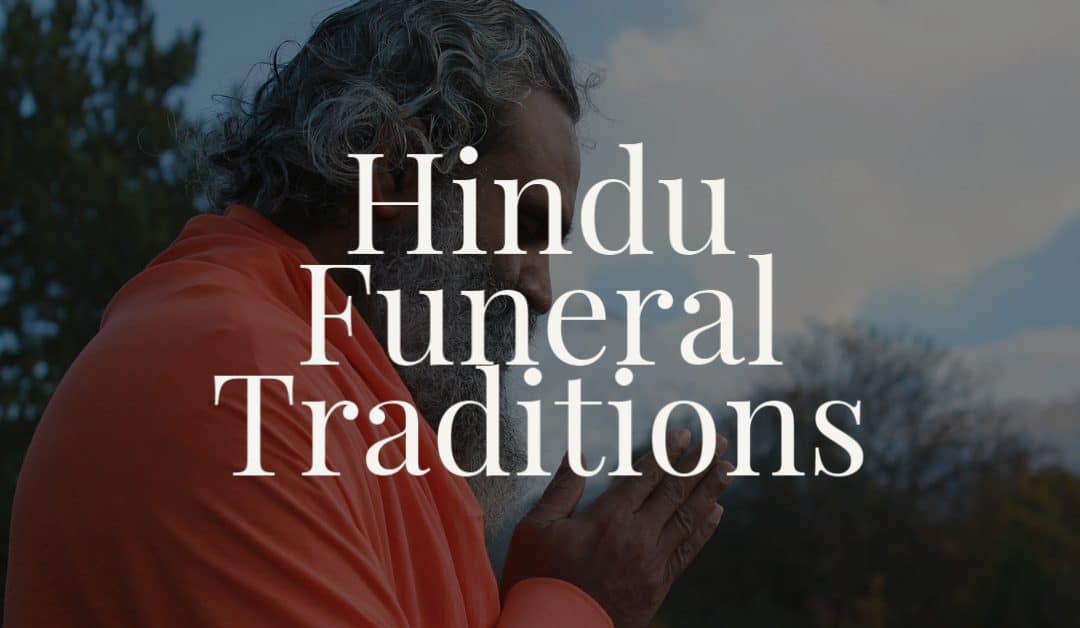If you wonder what Hindu funeral traditions are like, they can be different from traditional American funerals, but the core fundamentals remain the same. There is a gathering of family and friends who are grieving. There is a process of letting the deceased go and telling them goodbye with prayers and songs. And there are loved ones who suffer from their loss.
The Hindu religion teaches that when someone dies, the soul passes into another body after a time in the spiritual realm. The Hindu belief in reincarnation provides the foundation for their funeral traditions. In Hinduism, death applies only to the body; there is no death of the soul.
According to Hindu customs, the body remains at home until cremation, the disposal of the body by burning it to ashes. Cremation usually takes place within 24 hours after death. The family or priest then scatters the ashes at a sacred body of water or some other important area.
Preparation of the Body
Traditionally, for the “abhisegam” (holy bath), the family washes the body with a milk, yogurt, ghee, and honey mixture. The family may also cleanse the body in purified water while reciting mantras.
The big toes are tied together, hands placed palm-to-palm in prayer position, and the body is shrouded in a plain white sheet. If the person who died was a married woman who died before her husband, she is dressed in red. (1)
Gathering Together
A Hindu funeral is a type of wake that generally takes place within one to two days after the death. This wake occurs before the cremation ceremony and is a time for friends and family to gather.
A simple and inexpensive wooden casket holds the deceased’s body along with flowers, holy basil, and other herbs or oils used to adorn the body before cremation. It is not a Hindu custom to bring gifts or flowers to the wake. You may send flowers ahead of time if so desired. When you arrive at a Hindu wake, the prepared body no longer needs any flowers or anointing oils. In some faith traditions, it is considered bad karma to bring flowers at this point.
Hindu funeral rites take the form of funeral chants. The officiant is a Hindu priest, leading the family and mourners in death rituals. After these rituals, Hindus often place “pinda” (rice balls) near the casket. The casket is then removed feet-first and awaits the cremation ceremony. (1)
Hindu Cremation Ceremony
At the cremation ceremony, the eldest son typically presides. Cremation Ceremonies vary but often include:
- Prayers
- Singing
- Chanting
- Rice Balls or Flowers placed around the body
After the cremation, there may also be a reception at the family’s home.
Shraddha Ceremony
The Shraddha Ceremony is a Hindu Ceremony to help souls travel the spiritual world after death. For Hindus, the ceremony ensures that the souls of their loved ones who have died will travel well on its journey. Rituals performed by the son and family members satisfy the soul’s hunger and thirst during its journey until it reaches its destination.
During a Shraddha ceremony, feasts and gift-giving gatherings occur. The most common gifts tend to be metal vessels and money. Shraddhas can last anywhere from one day to several weeks.
What are the Participation Expectations?
Guests to a Hindu funeral should view the body quietly without touching it. After viewing the body, you may offer condolences to the family.
Non-Hindus sit quietly during the ceremony if they do not wish to participate in the chanting. They are welcome to join in the rituals, but there is no pressure to participate.
Some may also attend the cremation ceremony. Non-Hindus do not participate in the cremation ceremony.
The Hindu mourning period typically lasts ten days. It is appropriate to wait to visit the family until after that period has ended. After the ten days of mourning, it is appropriate to bring gifts of fruit.
What Should You Wear to a Hindu Funeral?
At the service, mourners dress casually and do not wear black. It is customary for guests to wear white or light colors. There is no need for a head covering for men or women. Women should keep their arms and knees covered and dress conservatively. Open-toe shoes and minimal jewelry are acceptable.
The key is to dress down, not dress up as one would generally do for a traditional American funeral.
Find Help
If you are planning a Hindu funeral, talk with us at Renaissance Funeral Home. Our Hindu Service with Cremation Includes:
- Professional Services
- Transfer of Deceased
- Care and Preparation (no embalming)
- Funeral (in our Chapel)
- Basic Wood Cremation Casket
- Witness Cremation
We honor all faith traditions and want to respect and appreciate the funeral traditions that are near to your heart. Contact us by phone or online to make a plan today, whether for yourself or for a loved one you are mourning. We are here to serve you.
- https://www.everplans.com/articles/hindu-funeral-traditions


